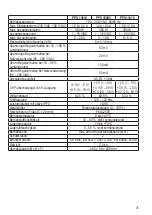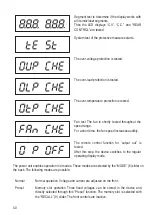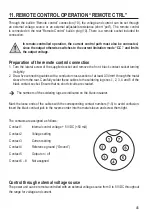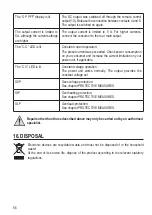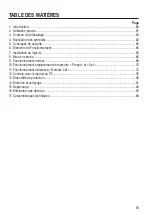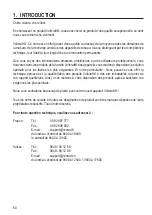
45
11. REMOTE CONTROL OPERATION “REMOTE CTRL”
Through the built-in “Remote control” connection (10), the voltage and current can be set through
an external voltage source or an external adjustable resistance (short “poti”). The remote control
is connected on the rear “Remote Control” built-in plug (10). There is a remote socket included for
connection.
In remote-controlled operation, the current control path must also be connected,
since the output otherwise switches to the current limitation mode “C.C.” and limits
the output voltage.
Preparation of the remote control connection
1. Turn the lateral screw of the supplied socket and remove the front, black contact socket turning
it slightly.
2. Draw five connecting cables with a conductor cross-section of at least 0.34mm
2
through the metal
sleeve from the rear. Carefully solder these cables to the soldering lugs nos.1, 2, 3, 4 and 5 of the
black contact socket. Ensure that no short circuits are created.
The numbers of the soldering lugs are indicated on the black insulator.
Mark the loose ends of the cables with the corresponding contact numbers (1-5) to avoid confusion.
Insert the black contact jack in the reverse order into the metal sleeve and screw them tight.
The contacts are assigned as follows:
Contact 1
Internal control v 5 V/DC (<50 mA)
Contact 2
Voltage setting
Contact 3
Current setting
Contact 4
Reference ground (“Ground”)
Contact 5
Output on / off
Contact 6 – 8 Not assigned
Control through external voltage source
The power unit can be remote-controlled with an external voltage source from 0 to 5 V/DC throughout
the range for voltage and current.

